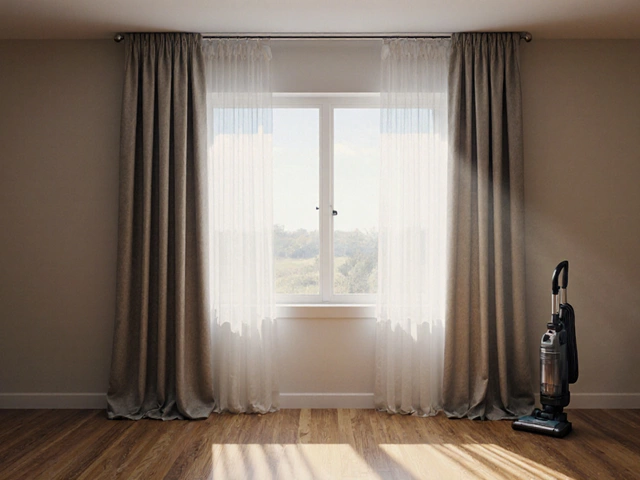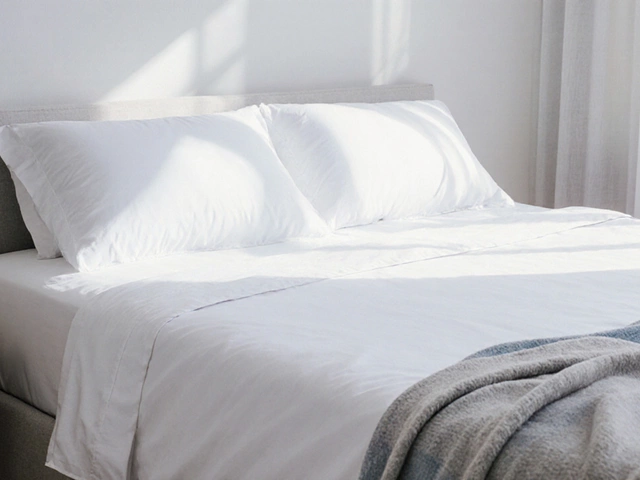Understanding Bedding: More Than Just Blankets

Bedding is a term that often stirs a bit of confusion, especially when it's thought to just mean blankets. The world of bedding is rich and expansive, extending beyond the humble bed cover to include a variety of textiles and layers that make up a well-dressed bed. Each piece contributes to comfort, warmth, and the overall aesthetic of your bedroom.
Understanding what bedding truly includes can transform your sleeping space. From fitted sheets to the duvet at the foot of your bed, each item has a purpose. By exploring the different types of bedding available, you can select products that meet your individual needs and preferences and ensure you care for them properly to prolong their life.
Defining Bedding
When we speak of bedding, it is easy to limit the thought to just blankets, but the reality is far more intricate. At its core, bedding encompasses everything you might find at the top of your mattress—a landscape of comfort and warmth. This includes sheets, pillowcases, comforters, duvets, quilts, and throws. Each piece serves a distinct role, from providing warmth to enhancing comfort and offering a layer of protection for your mattress and pillows. Interestingly, bedding not only affects how we sleep but can also play a crucial role in bedroom aesthetics.
Bedding has evolved through time, influenced by both cultural practices and technological advancements. Ancient Egyptians are credited with some of the earliest recorded uses of linen, a textile that remains a staple in bedding due to its durability and breathability. Similarly, the emergence of down-filled comforters, a European invention from the 17th century, was a significant milestone, offering unparalleled warmth and luxury. These historical changes highlight how bedding has long been an indicator of social status and personal taste.
Modern bedding has something for every taste and need, transcending simple functionality. Materials range from the softest cotton to temperature-regulating bamboo and luxurious silk, each with benefits tailored to specific climates and skin types. Consider a child’s whimsical bedspread versus the minimalist, crisp lines of a high-thread-count white hotel-style duvet; both are expressions of personal style and cultural trends. The array of choices calls for an understanding of what each type of bedding is best suited for, ensuring a restful sleep tailored to individual preferences.
"Your bedroom should be your solace from the busy world," says interior designer Jane Smith, emphasizing the importance of considering how your bedding choice impacts comfort and décor. "The right set can transform your room from drab to luxurious in a single sweep."
Types of Bedding Components
Looking into the components of bedding, the variety can sometimes seem overwhelming to the uninitiated. Here's a brief breakdown of key pieces: Sheets have two types, fitted and flat. The fitted sheet hugs the mattress, while the flat sheet provides a barrier between the sleeper and heavier blankets. Comforters versus duvets is another essential distinction; though they serve a similar purpose, duvets often use a cover that can be washed separately, making them a practical choice. Quilts, on the other hand, are a three-layer textile tradition, often used decoratively or as a light layer.
The process of choosing the right bedding starts with understanding your personal needs about warmth, comfort, and allergies. Organic options like cotton or wool draw in consumers looking for hypoallergenic choices, while down-filled blankets are unmatched for warmth in colder climates. Cost, too, is a factor not to be overlooked, as these pieces can range widely in price based on material quality and brand prestige.
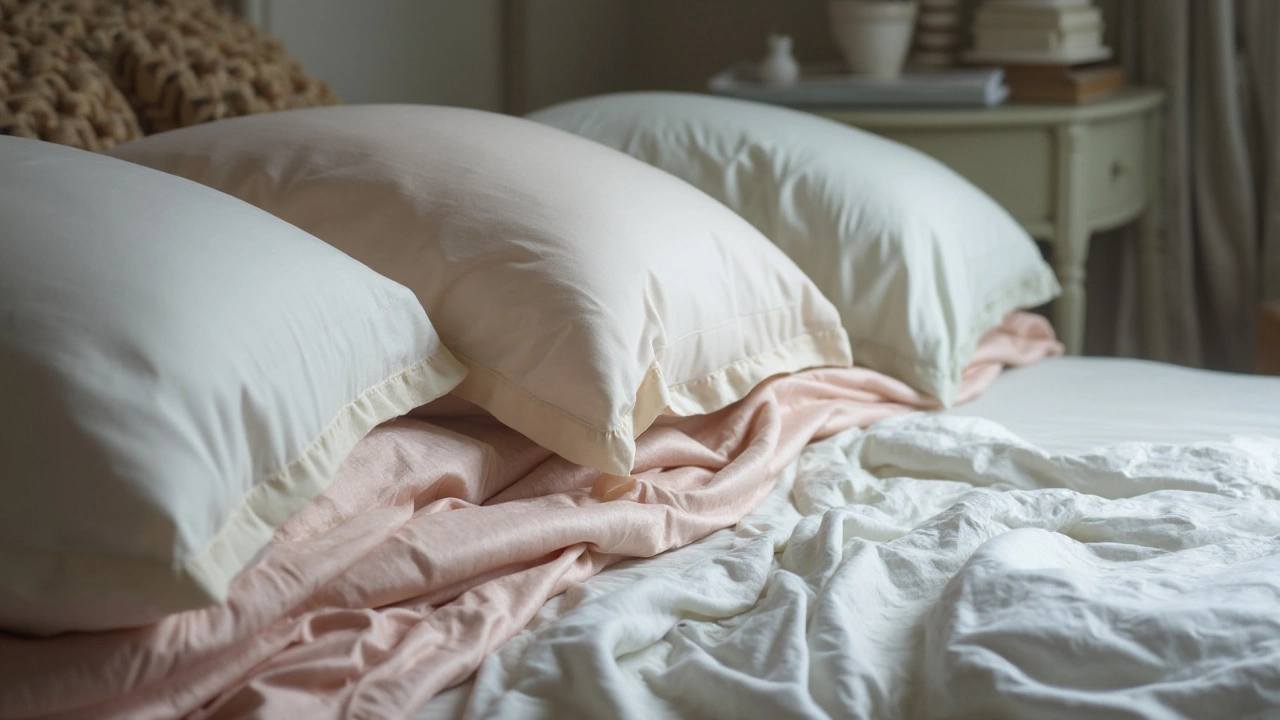
Different Types of Bedding
When setting up an inviting sleeping environment, understanding the variety of bedding options is essential. Let's begin with bed sheets; these are often the primary layer in direct contact with your skin. They come in various materials such as cotton, linen, and bamboo, each with unique qualities like breathability, softness, or durability. High-thread-count sheets often indicate a finer, smoother fabric, yet the type of material plays a significant role in their feel and longevity.
Next, we delve into blankets and quilts, which add warmth. Blankets are generally a single layer of cloth used for additional snugness. Quilts, however, comprise three layers: a top, a middle of batting, and a back, often crafted with beautiful stitch patterns or designs. This trio forms a warmer cover perfect for cooler nights. Interestingly, quilts are not just a sleeping accessory but can be cherished heirlooms or art pieces. The variety in design and function makes them a versatile component of bedding.
Another key element is the comforter or duvet. A comforter is a thick, fluffy blanket stitched to hold an insulating material like down or synthetic fibers. These are often used with covers for protection and to match room decor. Duvets, similar in purpose, consist of an insert and a cover, making laundering simple as only the cover requires frequent washing. A duvet's fluffy nature can transform your bed into a plush haven.
"A well-chosen bedding ensemble is crucial not only for comfort but for the psychological effect it has on relaxation and rest." - Marianne O'Malley, Sleep Expert
Pillowcases and shams also play a role in the realm of bedding. While pillowcases are primarily for functionality, protecting pillows from dirt and oils, shams are decorative, adding style to your ensemble. Selecting the right mix can enhance not just the comfort but the visual harmony of your bedroom, ensuring an inviting look that fits personal themes or seasonal changes.
Lastly, bed skirts and mattress toppers round out the bed set. The bed skirt not only adds elegance but hides the under-bed clutter or unsightly box springs. Toppers, placed above the mattress, enhance comfort and can drastically change the firmness level of your bed, providing tailored support for a good night's sleep. With so many choices, understanding each type's role can help you create a space that beckons rest and comfort every single night.
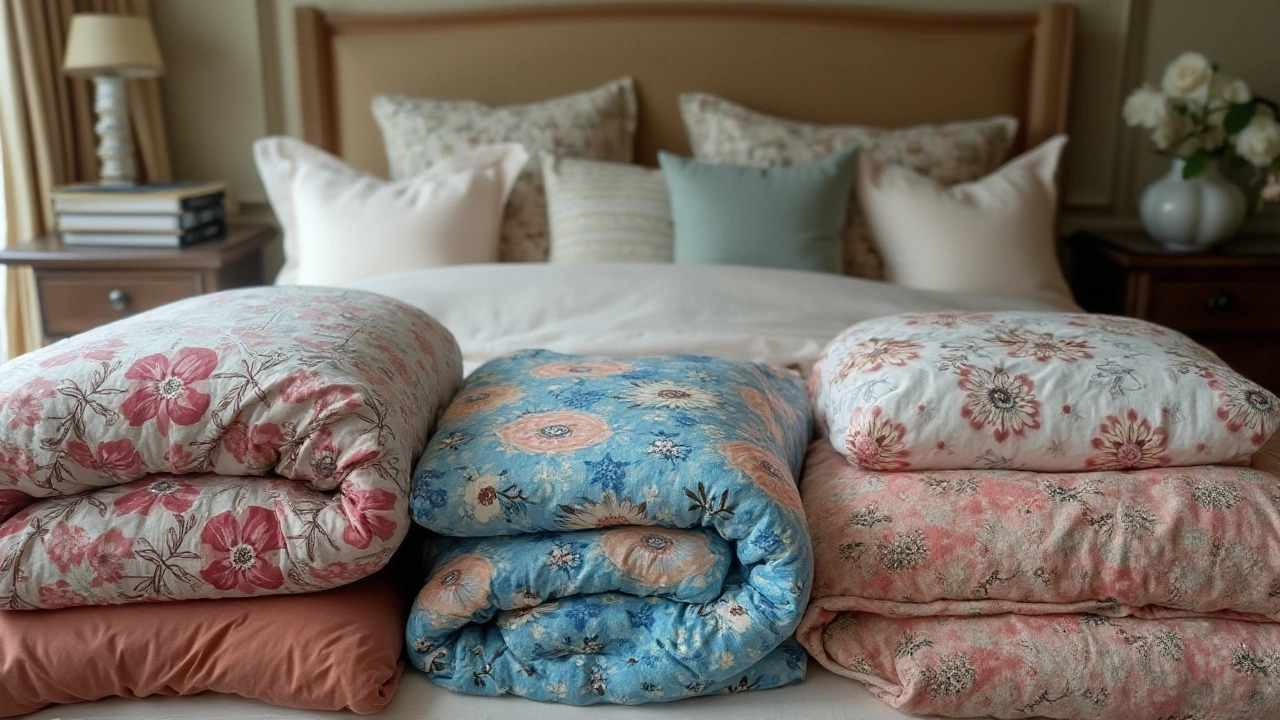
How to Choose the Right Bedding
Choosing the right bedding goes beyond picking something that matches your room's decor. While the allure of beautiful patterns and colors is undeniable, the true essence of choosing bedding lies in understanding how each piece contributes to your comfort and sleep quality. Begin by considering your climate. If you're in a warmer area, lightweight sheets and breathable materials like cotton or linen can keep you cool at night. Cooler climates might benefit from comforters or blankets that provide warmth without causing overheating. Assessing your sleeping environment is essential in making the right bedding choice to improve your sleep experience.
Another vital factor is personal comfort. Some people prefer the crisp texture of percale sheets, while others might lean towards the silky touch of sateen. Your sleeping style also plays a role. If you often wake up hot, moisture-wicking sheets could be advantageous. Hypoallergenic materials might be beneficial to others, especially if allergies disturb the comfort of their sleep. In addition, consider the size of your bed and ensure that your bed linens perfectly fit. Ill-fitting sheets that slip or bunch can disrupt a peaceful sleep. Don't be afraid to invest in quality; bedding is an investment in your rest and health.
The style and pattern of your bedding should naturally align with your personal taste and the overall theme of your bedroom. If your decor is minimalist, solid colors or subtle patterns may be best. Those who enjoy a more vibrant aesthetic might select bold prints or textured options. Opting for reversible designs can offer versatility without extra cost. Discovering what feels visually and physically right can elevate your bedroom into a haven of restfulness and relaxation. Remember, a tranquil space not only helps you relax but also enhances your mental well-being.
According to a study by Grand View Research, "the global bedding market size was valued at USD 73.88 billion in 2021 and is expected to expand at a compound annual growth rate (CAGR) of 9.0% from 2022 to 2030." This illustrates how much people value high-quality bedding and how crucial it is to select the right pieces.
Maintenance and care for your bedding is another consideration. Some materials require delicate handling, while others are more robust and machine washable. Always check the care instructions. Proper laundering not only keeps your bedding fresh but prolongs its lifespan. Storage is also key; breathable garment bags and proper folding techniques can help preserve the quality and fabric integrity when not in use. Integrating these practices into your routine ensures longevity and keeps your investment worthwhile.
Finally, don't overlook the importance of sustainability in your choice. As consumers become more environmentally conscious, the availability of eco-friendly bedding options is on the rise. Bedding made from organic cotton or sustainable bamboo fibers is not only soft and durable but also produced with minimal impact on the environment. Supporting brands that prioritize sustainability can contribute positively to global environmental efforts. By considering these factors, you can choose bedding that not only serves your needs but also aligns with values important to you.
| Type | Material | Climate Suitability |
|---|---|---|
| Sheets | Cotton | Warm Climates |
| Comforters | Wool | Cold Climates |
| Blankets | Fleece | All Seasons |
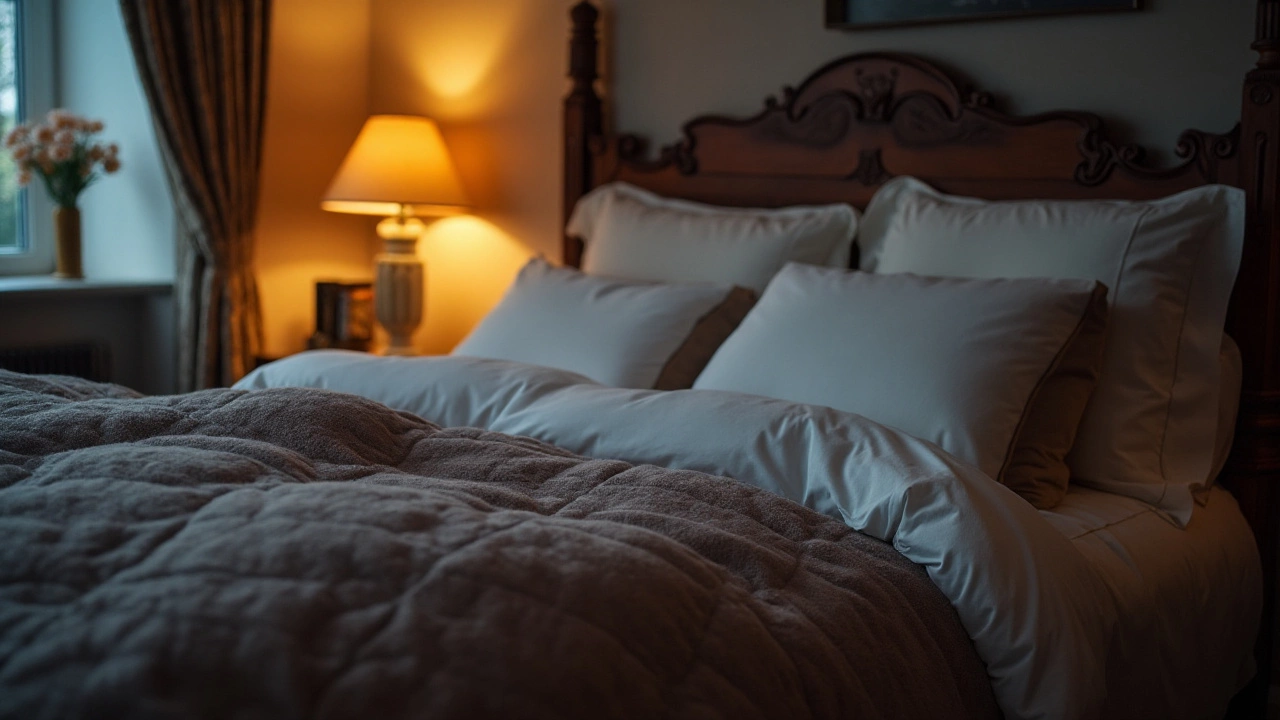
Caring for Your Bedding
When it comes to maintaining the longevity and comfort of your bedding, proper care is essential. Each type of bedding material, from cotton sheets to down comforters, has its specific maintenance routine to preserve quality and freshness. Regular washing is crucial, not only for hygienic reasons but also to retain the vibrant colors and softness of the materials. Sheets and pillowcases should be washed weekly in hot water to kill mites and remove dead skin cells, making them hygienically clean. For deeper bedding items like duvets or blankets, a less frequent schedule is acceptable but should not exceed the three-to-six-month mark, depending on personal allergies and preferences.
Understanding care labels is vital; they are a reliable guide on how best to wash and dry your bedding. These symbols, often found on the tags, indicate whether machine washing is suitable or if a delicate cycle is preferred. For instance, natural fibers like cotton and linen generally withstand higher temperatures, while synthetic materials such as polyester require a gentler touch. Drying your bedding in the open air is optimal as it avoids the intense heat of tumble dryers, which can break down fibers over time. However, if you choose to use a dryer, selecting a low heat setting helps minimize shrinking and maintains the shape and integrity of your bedding articles.
Another core aspect of caring for your bedding is rotating it. Many people find it helpful to have several sheet sets in rotation; this reduces the wear and tear on any individual set. Think of it as spreading the load across multiple players rather than overworking one. Additionally, flipping or rotating your mattress, pillows, and even duvets can distribute filling evenly, extending their functional life and maintaining their comfort levels. According to Dr. Neil Kline from The American Sleep Association, "Keeping your sleeping environment clean and fresh significantly contributes to better sleep quality." Regularly vacuuming mattresses and under-bed areas also helps minimize accumulations of dust and allergens.
If you're dealing with specific types of bedding like down or feathered items, professional cleaning might be advantageous if the instructions advise against home washing. These materials can lose their loft and insulating properties if improperly handled. Investing in protective covers helps shield these items from dirt and spills, and punctuates the need for less frequent cleaning. Spot cleaning stains as soon as they occur is key as well — the longer a stain settles, the harder it is to remove. A mild detergent or a paste of water and baking soda can be your best friend in gently lifting stains without damaging delicate fibers.
Lastly, ensuring a thorough dry is essential. Even slight dampness can lead to mold or mildew, unpleasant odors, and reduced allergy resistance. A helpful tip is to double-check your bedding after the drying cycle by shaking the pieces out to confirm they are completely free of moisture. Sunlight is a natural deodorizer and sanitizer, so taking advantage of sunny days can help freshen up your bedding naturally. This holistic approach to caring for your bedding not only enhances longevity but also contributes significantly to the quality of your sleep, which is often said to be the real fountain of youth for maintaining overall well-being.

